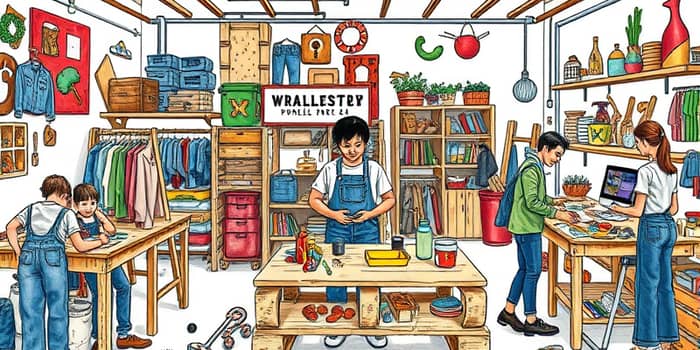
Upcycling is revolutionizing industries worldwide. From fashion runways to kitchen counters, a new wave of creators is turning waste into wealth. This movement merges artistic ingenuity with environmental care and offers practical strategies for lasting impact.
By reimagining trash as treasure, entrepreneurs and hobbyists alike can tap into rapidly growing sustainable markets while fostering circular economies in their communities.
At its core, upcycling means repurposing discarded materials into treasures. Unlike recycling—which often deconstructs items—upcycling preserves or enhances their form and function, creating products of higher value and unique appeal.
This process reduces landfill waste, cuts carbon emissions, and unlocks creative potential for makers who see opportunity in what others call refuse.
Global demand for upcycled goods is surging. Driven by eco-conscious consumers and supportive regulations, market segments from fashion to food are experiencing double-digit growth.
Forecasts project the upcycled fashion market alone to almost double by 2034, while upcycled food products are on track to exceed $124 billion in less than a decade.
Upcycling touches every corner of modern life. From bespoke fashion to gourmet snacks, innovators are finding new ways to add value where there once was waste.
These approaches showcase how simple materials become high-value items when reimagined by skilled hands and innovative minds.
Numerous enterprises illustrate the wealth-generating power of upcycling. Small teams and solo founders alike have built brands that resonate with eco-minded buyers.
These case studies prove that storytelling drives consumer engagement and can elevate humble materials into coveted products.
With minimal upfront investment and a dash of creativity, aspiring upcyclers can transform side hustles into profitable ventures.
Scaling upcycling initiatives requires consistent waste streams, efficient logistics, and consumer education. Overcoming the stigma of “used” goods can be a hurdle, but increased awareness is shifting perceptions rapidly.
As regulations tighten and carbon footprints become central to brand reputations, scaling sustainable operations will present both opportunities and competitive advantages for early adopters.
Beyond profits, upcycling drives significant environmental gains. It reduces landfill waste and emissions, conserves resources, and fosters a culture of reuse.
Communities that embrace upcycling often see new job creation, local artisan networks, and educational initiatives that inspire the next generation of eco-innovators.
Upcycling offers a powerful intersection of creativity, sustainability, and economic promise. By viewing waste as a resource, individuals and businesses can craft unique products, generate income, and drive meaningful environmental change.
Now is the time to embrace creative sustainability for profit—transform your untapped materials into opportunities for growth and make a lasting impact on our planet.
References





